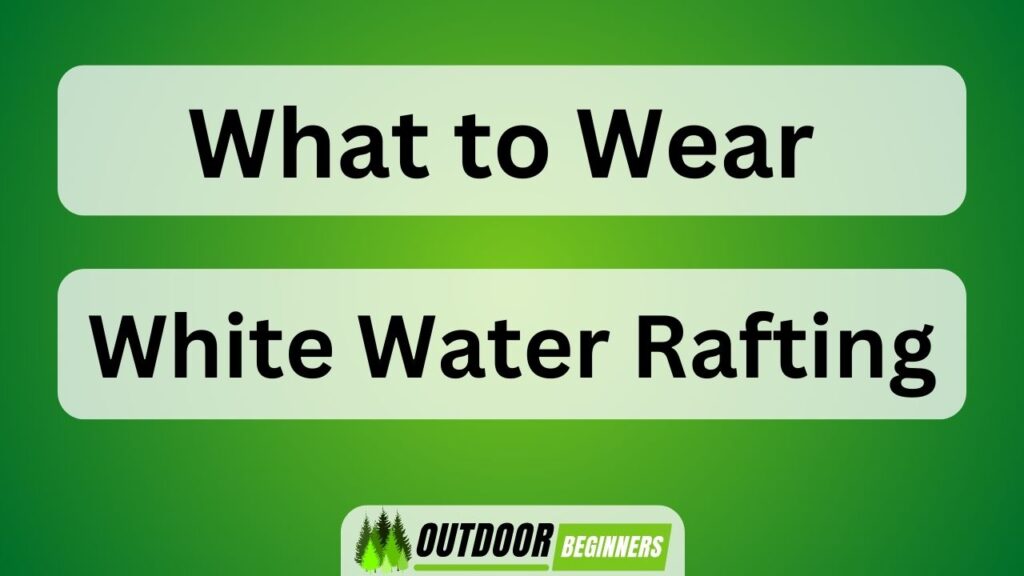When embarking on a summer hiking adventure, appropriate clothing choices are essential for comfort and safety. This article provides comprehensive guidance on what to wear during these outdoor outings.

It covers a range of topics including essential clothing items, suitable footwear for hot weather conditions, sun protection strategies, layering techniques for varying temperatures, fabric considerations for breathability and moisture-wicking properties, as well as accessories and gear to enhance both comfort and safety.
By following the practical advice offered in this article, hikers can ensure an enjoyable and successful experience while exploring nature in the summer months.
Key Takeaways of What to Wear Hiking in Summer
- Choose sturdy hiking boots or trail shoes with good traction
- Opt for moisture-wicking socks to keep feet dry and blister-free
- Wear lightweight and breathable clothing made from nylon or polyester
- Use a hat with a wide brim for shade and sun protection
Essential Clothing Items for Summer Hiking
One of the essential aspects of summer hiking is having appropriate clothing items. When it comes to footwear options, it is crucial to choose a pair that provides comfort and support for long hikes. Opt for sturdy hiking boots or trail shoes with good traction to prevent slips and falls on uneven terrain.

Additionally, wearing moisture-wicking socks can help keep your feet dry and blister-free during hot weather. Another important consideration is staying cool while hiking in the summer heat. Lightweight and breathable clothing made from materials such as nylon or polyester are ideal choices as they allow air circulation and wick away sweat from the body.
Wearing a hat with a wide brim can provide much-needed shade for your face, protecting you from excessive sun exposure. Remember to also apply sunscreen regularly to protect exposed skin from harmful UV rays.
Choosing the Right Footwear for Hot Weather Hiking
Appropriate footwear selection for hiking in high temperatures should prioritize breathability and heat dissipation to ensure comfort and prevent overheating. When choosing footwear options for hot weather hiking, consider the following factors:
- Lightweight materials such as mesh or synthetic fabrics that allow air circulation around the feet.
- Open-toe sandals with sturdy soles for increased ventilation and flexibility.
- Trail running shoes that provide cushioning and support while allowing moisture to escape.
- Low-cut hiking shoes or boots made of breathable materials to prevent excessive sweating.
- Moisture-wicking socks to keep your feet dry and reduce friction, thus preventing blisters.
By selecting appropriate footwear options, hikers can minimize discomfort caused by excessive heat and reduce the risk of developing blisters.
Transitioning into the subsequent section about sun protection, it is also important to consider protecting oneself from harmful UV rays by wearing hats, sunglasses, and applying sunscreen.
Sun Protection: Hats, Sunglasses, and Sunscreen
When considering sun protection during outdoor activities, it is essential to prioritize the use of hats, sunglasses, and sunscreen to minimize the risk of harmful UV ray exposure.
Hats with wide brims provide shade for the face, neck, and ears. Sunglasses with UV protection help shield the eyes from damaging rays.

Sunscreen should be broad-spectrum with a high SPF factor and applied generously to all exposed skin areas. Reapplication every two hours is recommended, especially after sweating or swimming.
Additionally, staying hydrated is crucial in maintaining healthy skin and preventing heat-related illnesses. It is important to drink plenty of water before, during, and after outdoor activities to replace fluids lost through perspiration.
Avoiding direct sun exposure during peak hours (10 am – 4 pm) when UV radiation is strongest can further enhance sun protection measures.
Layering Techniques for Variable Temperatures
This discussion will focus on layering techniques for variable temperatures, specifically addressing temperature-appropriate clothing options, versatile layering combinations, and managing body heat.

When facing fluctuating weather conditions during outdoor activities such as hiking or camping, it is crucial to choose clothing that suits the temperature range. By selecting appropriate materials and layers, individuals can effectively regulate their body temperature and remain comfortable throughout their outdoor adventure.
Additionally, understanding how to combine different layers in a versatile manner allows for easy adjustments according to changing weather conditions.
Temperature-Appropriate Clothing Options
Temperature-appropriate clothing options for summer hiking include lightweight and breathable fabrics that help regulate body temperature and moisture, such as moisture-wicking shirts and quick-drying shorts. These fabrics are designed to keep you cool and comfortable during your hike, even in hot weather conditions.
To ensure a successful and enjoyable hiking experience, it is important to consider the following essential gear:
- Sun protection: Wear a wide-brimmed hat and sunglasses to shield yourself from the sun’s harmful rays.
- Proper footwear: Invest in sturdy hiking boots or trail shoes with good traction to prevent slips and falls.
- Hydration pack: Carry plenty of water in a hydration pack or water bottle to stay hydrated throughout your hike.
- Lightweight backpack: Choose a backpack that is spacious enough to carry all your essentials but light enough not to weigh you down.
- Snacks: Pack energy-rich snacks like granola bars or trail mix to keep your energy levels up.
By incorporating these items into your hiking attire, you can ensure comfort, safety, and enjoyment on the trails.
In the next section, we will explore versatile layering combinations for fluctuating temperatures during summer hikes.
Versatile Layering Combinations
Versatile layering combinations for fluctuating temperatures during outdoor activities involve pairing lightweight base layers with insulating mid-layers and weather-resistant outer layers. These versatile layering techniques allow hikers to adapt their clothing according to the changing weather conditions, ensuring comfort and protection on the trail. When it comes to staying cool on the trail, a common concern during summer hikes, choosing breathable and moisture-wicking fabrics for base layers is essential. This helps in regulating body temperature by wicking away sweat from the skin. Mid-layers provide insulation when needed, while outer layers protect against wind and rain. The following table illustrates some examples of versatile layering combinations for different temperature ranges:
| Temperature Range | Base Layer | Mid-Layer | Outer Layer |
|---|---|---|---|
| Hot (25°C+) | Lightweight | None | Light windbreaker |
| Mild (15-25°C) | Lightweight | Fleece | Rain jacket |
| Cool (<15°C) | Lightweight | Insulated | Softshell jacket |
Managing Body Heat
In order to fully enjoy hiking during the summer, effectively managing body heat is crucial. The combination of physical exertion and high temperatures can lead to overheating and dehydration if not properly managed.
Here are some practical tips for staying cool and hydrated while hiking:
- Drink plenty of water: Hydration is key in preventing heat-related illnesses. Carry a sufficient amount of water and drink regularly throughout your hike.
- Dress appropriately: Wear lightweight, breathable clothing that allows air circulation and wicks away sweat.
- Use sun protection: Apply sunscreen with a high SPF rating, wear a wide-brimmed hat, and use sunglasses to protect yourself from harmful UV rays.
- Take breaks in shaded areas: Find shady spots along the trail to rest and lower your body temperature.
- Use cooling strategies: Utilize cooling towels, neck gaiters soaked in cold water, or portable fans to help regulate body temperature.
Selecting the Best Fabrics for Breathability and Moisture-wicking
This discussion will focus on the selection of fabrics for optimal breathability and moisture-wicking properties in hiking attire.
Breathable fabric options are crucial for maintaining comfort during physical activity, as they allow air to circulate and prevent overheating.
Moisture-wicking material choices are also important, as they help to transport sweat away from the body, keeping the hiker dry and reducing the risk of chafing or discomfort.
Breathable Fabric Options
Polyester and nylon are two commonly used fabrics that offer breathability for hikers in the summer. These synthetic fabrics are known for their moisture-wicking properties, which help to keep the body dry by drawing sweat away from the skin. Compared to natural fabrics like cotton, polyester and nylon are quick-drying materials that allow for efficient evaporation of moisture.
When considering fabric options for hiking, it is important to evaluate their moisture-wicking capabilities and quick-drying properties. This can ensure comfort and prevent discomfort caused by wet clothes during extended periods of physical activity. In addition, synthetic fabrics tend to be more durable and resistant to wear and tear compared to natural fabrics.
As we delve into the subsequent section about ‘moisture-wicking material choices,’ we will explore specific fabric options that excel in keeping hikers dry on their outdoor adventures.
Moisture-Wicking Material Choices
Nylon and polyester are two synthetic fabrics that demonstrate superior moisture-wicking capabilities, allowing hikers to stay dry during physical activity. When it comes to choosing the best moisture-wicking fabric for hiking, these materials are often preferred due to their ability to pull sweat away from the body and evaporate it quickly.
This is especially important during hot summer hikes when excessive sweating can lead to discomfort and even heat-related illnesses. The benefits of moisture-wicking clothing extend beyond keeping hikers dry. These fabrics also help regulate body temperature by allowing air circulation, preventing overheating. Additionally, they are lightweight and quick-drying, making them ideal for multi-day hikes or situations where washing clothes may not be possible.
Overall, nylon and polyester are excellent choices for moisture-wicking performance while hiking in warm weather conditions.
Best Summer Hiking Fabrics
Synthetic fabrics with superior moisture-wicking capabilities are often preferred for outdoor activities in warm weather due to their ability to keep the body dry and regulate temperature. When it comes to choosing the best fabric for summer hiking, lightweight options are highly recommended for their breathability and comfort. Here are five top fabric choices that combine performance with practicality:
- Nylon: Known for its durability and quick-drying properties, nylon is an excellent choice for hot weather hikes.
- Polyester: This versatile fabric offers excellent moisture-wicking abilities while being lightweight and resistant to wrinkles.
- Merino Wool: Despite being a natural fiber, merino wool is surprisingly effective at wicking away sweat and regulating body temperature.
- Polypropylene: With its high breathability and fast-drying capabilities, polypropylene is ideal for intense summer hikes.
- Bamboo: Bamboo fabrics are not only eco-friendly but also offer exceptional moisture absorption and ventilation.
Accessories and Gear for Comfort and Safety
To ensure comfort and safety while hiking in the summer, it is important to consider appropriate accessories and gear.
One essential accessory for hydration is a water bottle or hydration pack. It is crucial to stay hydrated during hot weather conditions to prevent dehydration.
Additionally, carrying a first aid kit is necessary as part of safety gear for emergencies. This kit should include bandages, antiseptic wipes, pain relievers, and any necessary medications.
Another important item is a whistle, which can be used to signal for help in case of an emergency.
A headlamp or flashlight is also recommended for hiking in the summer, as it can provide illumination during early morning or late evening hikes.
Frequently Asked Questions
Are There Any Specific Brands or Models of Hiking Clothing That Are Recommended for Summer Hiking?
Recommended brands for summer hiking clothing should prioritize fabrics that offer breathability and moisture-wicking properties. This ensures comfort and helps regulate body temperature. Look for reputable outdoor clothing brands known for their quality and performance in hot weather conditions.
What Are Some Tips for Preventing Blisters and Discomfort When Hiking in Hot Weather?
Preventing blisters and discomfort when hiking in hot weather can be achieved by choosing the right footwear. Properly fitting shoes with moisture-wicking socks, cushioning, and breathability are essential to reduce friction and heat buildup on the feet.
Is It Necessary to Wear Long-Sleeved Shirts and Pants for Sun Protection, or Can I Wear Shorter Sleeves and Shorts?
When considering the necessity of wearing long-sleeved shirts and pants for sun protection while hiking, it is important to weigh the benefits of such clothing against the comfort and practicality of shorter sleeves and shorts.
Are There Any Specific Features or Technologies to Look for in Hiking Apparel That Help With Breathability and Moisture-Wicking?
When considering hiking apparel, it is important to prioritize breathability and moisture-wicking features. These technologies help to regulate body temperature and keep the wearer dry, improving comfort and reducing the risk of overheating or dehydration in hot weather. Proper footwear is also crucial for summer hiking, providing support, traction, and protection for the feet.
What Are Some Essential Hiking Accessories and Gear That Can Enhance Comfort and Safety During Summer Hikes?
Proper footwear is essential for comfort and safety during summer hikes. Staying hydrated is crucial, so carrying a water bottle or using a hydration pack is recommended. These accessories enhance overall comfort and reduce the risk of dehydration.
Conclusion
In conclusion, when embarking on a summer hiking adventure, it is crucial to be well-prepared with the right clothing and gear.
By selecting essential clothing items that offer breathability and moisture-wicking properties, such as lightweight and quick-drying fabrics, hikers can stay comfortable in hot weather conditions.
Additionally, choosing appropriate footwear that provides support and ventilation will ensure a pleasant hiking experience.
Sun protection accessories like hats, sunglasses, and sunscreen are vital for shielding oneself from harmful UV rays.
Lastly, layering techniques allow hikers to adapt to variable temperatures during their journey.
So go forth into the wilderness equipped with these practical tips and conquer those trails with confidence!




